Bush Terminal
The catalyst for development of the Sunset Park waterfront was the creation of the Bush Terminal, which dominates the area between 31st and 51st Streets. It was built by developer Irving Bush (1869-1948), largely in the period between 1902 and 1915. The Bush Terminal was the most extensive of the Brooklyn dock works, composed of deep water piers, large warehouses and manufacturing lofts, all served by a dedicated railroad system, carfloats, float bridges, and a truck fleet. Bush Terminal was the first American example of a completely integrated manufacturing and warehousing facility, served by both rail and water transportation under unified management. It is also a rare surviving example of an isolated urban freight railroad served primarily by water transport of railcars.
Irving Bush was the son of Rufus T. Bush, a partner in the Bush and Denslow Manufacturing Company, which owned a small refinery operating at the foot of 41st street as a subsidiary of Standard Oil. When Rufus Bush died in 1890, Irving Bush inherited two large waterfront lots and an incomplete pier filled with refinery ash.
Bush later stated that his idea for the Bush Terminal grew out of his boyhood fascination with ships and belief that there must be a better way to handle cargo than existed at the time in New York Harbor. Bush left his position at Standard Oil in 1895 to concentrate on his development and by 1900 had enough shipping and warehouse business lined up to begin work in ernest. Bush's idea was novel in that his buildings basically served as apartments for businesses, making clean, well-lit space and robust transportation infratructure available to manufacturers of all sizes in a way that up to that point had been limited to only the largest corporate concerns.
The company was officially incorporated in 1903 and by the time construction was largely complete in 1915, the facility covered 200 acres. The terminal was a catalyst for development in the area and at its peak employed over 30,000 people, many of them recent Italian and Scandinavian immigrants. The Bush Terminal was a model for future development, inspiring the Brooklyn Army Terminal just to the south as well as what would become the Bayonne Naval Base in New Jersey.
The depression in the 1930s cooled activity at the site somewhat and Bush separated the factory lofts to the north (run as the Bush Terminal Buildings Company) from the pier, railroad and warehouse operations, which were run as the Bush Terminal Company with Bush as president until his death in 1948.
Mercifully, the timing of Bush's passing saved him from having to watch the decline of the innovative shipping empire he had worked so hard to build. The advent of containerization in 1956 and the development of more spacious ports in New Jersey to handle those containers lead to a steep decline in shipping through Sunset Park. The area was left dotted with numerous abandoned facilities, although the area remained fairly busy with industrial activity and a small amount of shipping.
The center of the Bush Terminal was a set of six warehouses constructed between 1895 and 1905 along the waterfront bulkhead between 44th and 50th Streets. The waterfront piers were located on the west side of the warehouses and the Bush Terminal Railyard was located on the east side. Two of the six units have been demolished.
Additional one-story warehouses were built in 1906 on the east side of 1st Avenue, adjacent to the railyard and serviced by railroad sidings. The sidings are now inactive and many of the original buildings have been replaced.
The South Brooklyn Marine Terminal is an 88-acre area on the waterfront between between 29th and 39th Streets, north of the Bush Terminal Warehouses. In 2007 the Axis Group signed a 15-year lease with the city Axis to use the SBMT primarily as a port of entry for finished automobiles and a processing facility for vehicles intended for wholesale distribution in the U.S. and abroad. Axis will also maintain general stevedoring services for containers, break bulk and other cargo. Axis plans to aggressively market SBMT for locally-demanded commodities such as niche containers and construction materials. (NY Observer)
More detailed historical information as well as photos of the Bush Terminal in its heyday are available from the Libray of Congress' Historic American Buildings Survey.



Bush Terminal Warehouses
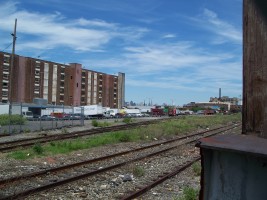
Bush Terminal Warehouses and the Terminal Railroad yard
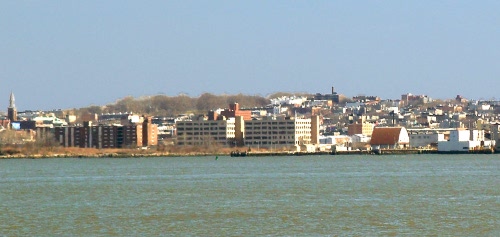
Bush Terminal Warehouses viewed from the harbor
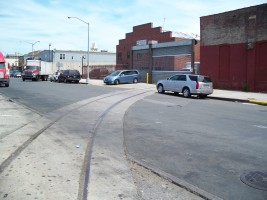
Siding across First Avenue to U.S. Chocolate Corp.
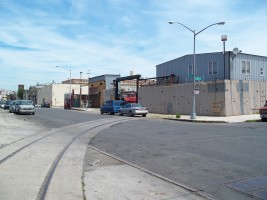
Siding across First Avenue to Brooklyn Pallets
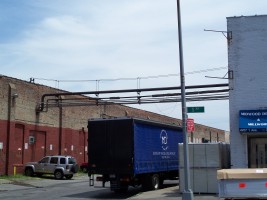
Pipes across 49th Street at First Avenue
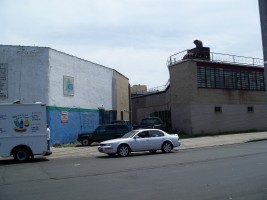
Spur into IESI (waste disposal company)
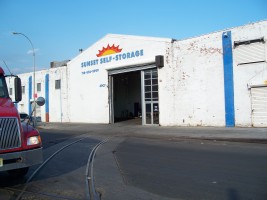
Unused siding into Sunset Self-Storage, 4907 1st AVenue

Municipal garbage trucks queued on 1st Avenue north of 50th Street
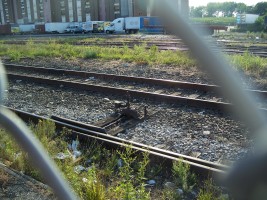
Old siding switch, 1st Avenue at 47th Street
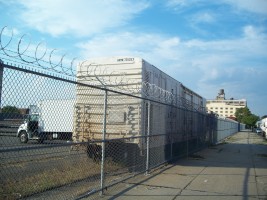
Refrigerator car being unloaded, 1st Avenue at 45th Street
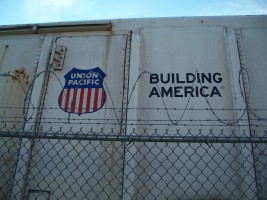
Refrigerator car
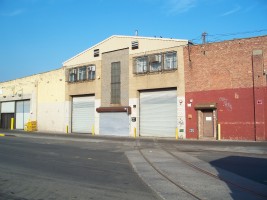
Old siding into 4415 1st Avenue

Looking north on 1st Avenue at 44th Street
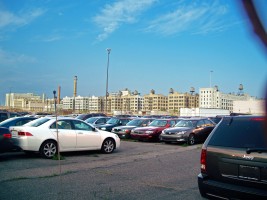
South Brooklyn Marine Terminal: New car storage west of 39th Street between 1st and 2nd Avenues